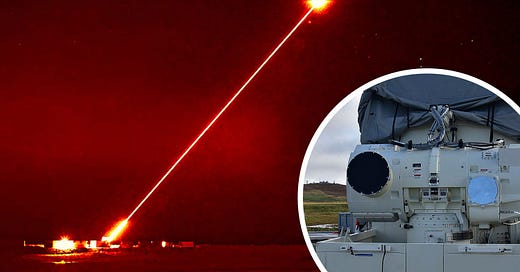Air Defense Systems: Low-Cost Weapons Spur Experimental New Technologies
Iran and Russia's ability to produce vast amounts of cheap weapons to overwhelm air defense systems is a growing concern. New technologies are underway to counter this and address high costs.
The British-developed DragonFire directed energy (DE) system remains untested in the battlefield, but will likely arrive in Ukraine soon. Image source
On April 13, Israel’s Iron Dome and Arrow air defense systems, in conjunction with Israeli Air Force and allied assistance, reportedly shot down 99% of the munitions launched by Iran that day. Despite these successful efforts, four Iranian ballistic missiles struck Nevatim Airbase – one of the most secure sites in the country and home to the F-35 aircraft Israel reportedly used to strike Iranian assets in Damascus. The damage was minimal, but the strikes sent a clear message that Iran could evade the best air defense capabilities of Israel and its allies to hit the highly protected area. Although Iran apparently did not target the Negev Nuclear Research Center at Dimona – the alleged site of Israel’s nuclear weapons program – there are growing fears that it could successfully do so in the event of another strike.
Estimates claim that both Iran and Hezbollah possess the capacity to overwhelm Israel’s air defense systems. If they launched a joint attack, or if Iran used hypersonic missiles – missiles that travel faster than the speed of sound – Israel’s air defense systems are unlikely to prevent significant damage to critical infrastructure across the country. In Ukraine, the country continues to struggle with the cost of the ongoing Russian invasion, including in its missile defense capabilities. These factors are accelerating development into experimental areas that will likely define the new generation of air defense technology.
Keep reading with a 7-day free trial
Subscribe to Between the Lines to keep reading this post and get 7 days of free access to the full post archives.





